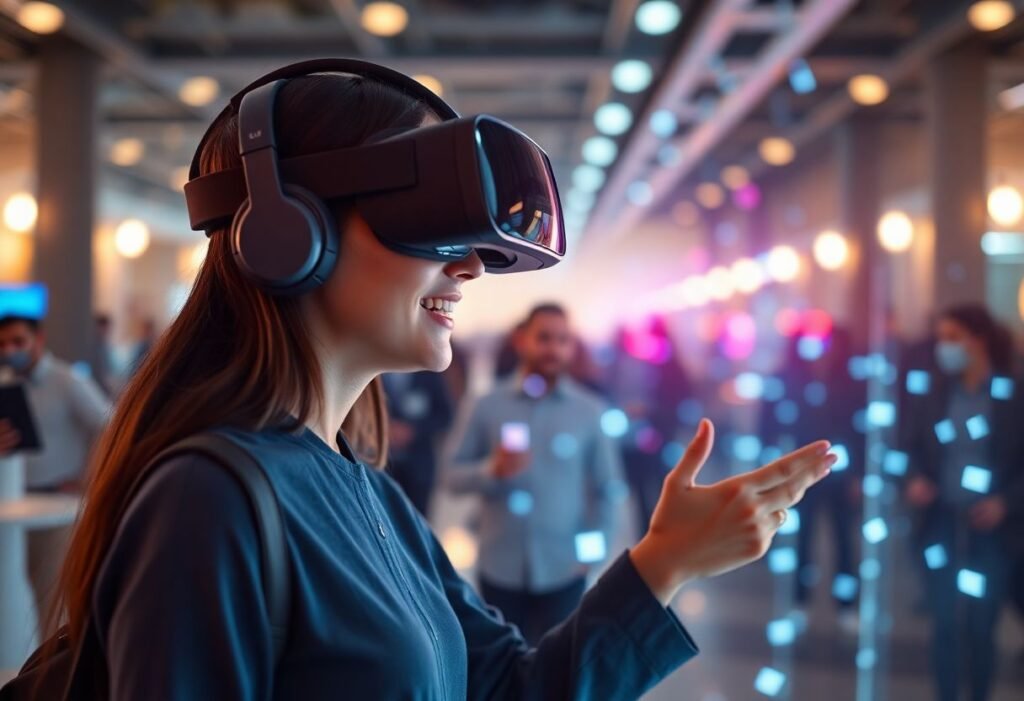Virtual reality (VR) is rapidly transforming the landscape of social interaction, heralding an era of profound innovation. As technology advances, VR is creating immersive environments that allow individuals to connect and communicate in ways that were once unimaginable. This article delves into the latest innovations in virtual reality, highlighting their significance in enhancing social interactions in various contexts.
The Role of Virtual Reality in Socialization
Virtual reality technology has the power to redefine how we socialize. By creating immersive environments, VR allows users to experience social settings that simulate real life. Individuals can engage in virtual meetups, participate in group activities, or even attend events with people from all over the world. This technological leap not only breaks geographical barriers but also fosters deeper emotional connections, making socialization more engaging and vibrant than traditional media. With features like real-time interaction and customizable avatars, VR enhances user engagement and promotes a sense of presence that textual communication lacks.
Innovative Platforms Transforming Social Experiences
Several innovative platforms are emerging, showcasing the potential of virtual reality in enriching social experiences. Applications such as VRChat and AltspaceVR provide unique spaces for people to meet, play games, or attend events regardless of physical location. These platforms foster communities where users can express themselves freely, share experiences, and build friendships. The social dynamics within these VR environments allow for interaction in a visually engaging way, encouraging creativity and collaboration that might not happen outside of the digital realm.
Impact of Virtual Reality on Remote Work
As remote work becomes a norm, virtual reality innovation plays a crucial role in maintaining social interaction among teams. VR tools can simulate office environments, allowing employees to collaborate in real time, enhancing communication and teamwork. Virtual conferences, meetings, and brainstorming sessions provide an immersive collaborative experience that significantly improves productivity and morale. By creating a shared virtual workspace, companies can bridge the gap between remote staff, making interactions feel more personal and connected, thus maintaining a corporate culture even in a decentralized work setting.
Education and Virtual Reality for Social Learning
The educational sector is also embracing virtual reality to foster social learning. VR simulations enable students to collaborate in real-world scenarios that teach them teamwork and communication skills. Through role-playing and interactive group activities, students learn to work together effectively, preparing them for future workplace dynamics. VR also allows educators to create diverse and dynamic learning environments, making it easier to engage students and promote a sense of community and shared learning. This approach enhances the educational experience by integrating social interaction as a core component of learning.
Challenges and Solutions in Social VR Innovations
Despite the potential of virtual reality for social interaction, there are notable challenges, including accessibility and technological limitations. Not everyone has access to high-quality VR equipment, which can create a divide between users. However, innovations such as mobile VR and lower-cost headsets are emerging to address these barriers. Additionally, developers continually work on enhancing VR experiences, making them more user-friendly and inclusive. It is crucial for industry stakeholders to invest in solutions that make virtual environments accessible to a broader audience, fostering a more inclusive social landscape.
The Future of Modern Social Interactions through VR
The future of social interaction lies in the continuous evolution of virtual reality technologies. As advancements in VR and augmented reality (AR) unfold, these technologies will likely converge, leading to new forms of social engagement and interaction. The integration of AI and machine learning into VR platforms promises even more personalized experiences, tailoring interactions based on user preferences. As we look forward, the possibilities of what social interaction will entail in a virtual world are limitless, shaping a new frontier of connection and engagement.
Disclaimer: This article is for informational purposes only and does not constitute professional advice.





















